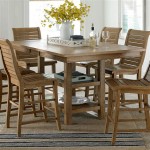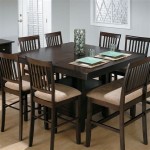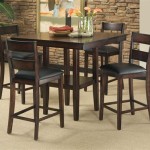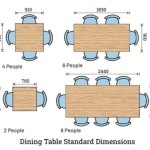Illuminating Your Outdoor Spaces: A Comprehensive Guide to Solar Table Lights
Solar table lights offer an attractive and eco-friendly solution for illuminating outdoor spaces. These lights harness the power of the sun to provide ambient lighting for patios, decks, gardens, and other outdoor settings. Their popularity stems from their ease of installation, cost-effectiveness, and minimal environmental impact. This article explores the diverse aspects of solar table lights, covering their functionality, advantages, types, selection criteria, maintenance, and troubleshooting.
Solar table lights function on a simple yet effective principle. A photovoltaic (PV) cell, also known as a solar cell, absorbs sunlight and converts it into direct current (DC) electricity. This electricity is then stored in a rechargeable battery, typically a nickel-metal hydride (NiMH) or lithium-ion battery. When darkness falls, a light sensor activates the light, drawing power from the battery to illuminate the light-emitting diode (LED). The LED, chosen for its energy efficiency and long lifespan, emits light until the battery is depleted or sufficient sunlight triggers the light sensor to turn off the light.
Understanding the Benefits of Solar Table Lights
Solar table lights present a compelling alternative to traditional electric lighting, offering a range of advantages that contribute to their growing popularity.
Energy Efficiency and Cost Savings: The primary advantage of solar table lights is their reliance on solar energy, a renewable and free resource. This eliminates the need for external power sources and associated electricity bills. Over the lifespan of the lights, the cumulative savings on energy costs can be significant, particularly for households with multiple outdoor lighting fixtures. By reducing reliance on the electrical grid, solar lights contribute to a more sustainable lifestyle and reduced carbon footprint.
Ease of Installation and Portability: Unlike wired lighting systems, solar table lights require no complex wiring or electrical connections. Installation typically involves simply placing the light on a desired surface. This ease of installation makes them ideal for renters or homeowners who wish to avoid the hassle of electrical work. Furthermore, their portability allows for easy relocation, providing flexibility in adapting outdoor lighting arrangements to suit different needs and preferences. They can be moved to different areas of the patio, taken to outdoor events, or even used as temporary lighting solutions during power outages.
Environmental Friendliness: Solar table lights are an environmentally conscious choice for outdoor lighting. By utilizing solar energy, they minimize reliance on fossil fuels and reduce greenhouse gas emissions associated with electricity generation. The use of LEDs, known for their energy efficiency and long lifespan, further contributes to their environmental benefits. Some solar lights are also made from recycled materials, further minimizing their environmental impact. By choosing solar table lights, consumers can actively contribute to a more sustainable future.
Safety and Low Voltage Operation: Solar table lights operate at low voltage, typically ranging from 1.2V to 3.7V. This low voltage eliminates the risk of electric shock, making them safe for use around children and pets. The absence of electrical cords also reduces the risk of tripping hazards and other accidents. This safety aspect makes them a suitable choice for families with young children or individuals concerned about electrical safety in outdoor environments.
Automatic Operation: Most solar table lights are equipped with a light sensor that automatically activates the light at dusk and deactivates it at dawn. This automatic operation eliminates the need for manual switching, providing convenience and ensuring consistent illumination throughout the night. Some models also offer features such as adjustable brightness levels and timer settings, allowing users to customize the lighting to their specific needs and preferences.
Exploring Different Types of Solar Table Lights
The market offers a wide variety of solar table lights, each with its own unique design, features, and functionality. Understanding the different types can help consumers make informed decisions based on their specific needs and aesthetic preferences.
Lantern Style Solar Lights: These lights resemble traditional lanterns and often feature intricate designs and decorative elements. They typically provide a soft, ambient glow and are ideal for creating a cozy and inviting atmosphere on patios and decks. Lantern-style solar lights are often constructed from durable materials such as metal, resin, or glass, and may feature weatherproof designs to withstand outdoor conditions.
Geometric Solar Lights: Geometric solar lights feature modern, angular designs and are often made from metal, plastic, or glass. They offer a contemporary aesthetic and can add a touch of sophistication to outdoor spaces. These lights are available in a variety of shapes and sizes, ranging from small accent lights to larger statement pieces.
String Lights with Tabletop Base: These lights combine the charm of string lights with the convenience of a tabletop base. They typically feature a string of LEDs attached to a weighted base, allowing them to be placed on tables, countertops, or other surfaces. These lights are ideal for creating a festive atmosphere and can be used for parties, gatherings, or simply to add a touch of whimsy to outdoor spaces.
Solar Powered Candle Lanterns: These lanterns mimic the flickering glow of traditional candles but are powered by solar energy. They often feature realistic candle designs and provide a warm and inviting ambiance. Solar-powered candle lanterns are a safe and convenient alternative to traditional candles, eliminating the risk of fire hazards and the need for replacement candles.
Decorative Accent Lights: Decorative accent lights encompass a broad range of designs, including animal shapes, floral patterns, and abstract sculptures. These lights serve as decorative elements during the day and provide ambient lighting at night. They can add a touch of personality and whimsy to outdoor spaces and are often used to highlight specific features, such as plants or sculptures.
Key Considerations When Choosing Solar Table Lights
Selecting the right solar table lights requires careful consideration of several factors, including brightness, battery life, weather resistance, design, and price. By evaluating these factors, consumers can choose lights that meet their specific needs and preferences.
Brightness and Light Output: The brightness of a solar table light is measured in lumens. A higher lumen rating indicates a brighter light. The desired brightness will depend on the intended use of the light. For ambient lighting, a lower lumen rating may suffice, while task lighting may require a higher lumen rating. Consider the size of the area to be illuminated and the desired level of brightness when selecting solar table lights.
Battery Life and Charging Time: The battery life of a solar table light determines how long it will illuminate after a full charge. Longer battery life is desirable, particularly for individuals who want to enjoy their lights throughout the night. The charging time refers to the amount of time it takes for the battery to fully charge. Shorter charging times are advantageous, especially in regions with limited sunlight. Review the manufacturer's specifications for battery life and charging time before purchasing solar table lights.
Weather Resistance and Durability: Outdoor lighting fixtures are exposed to the elements, including rain, sun, wind, and temperature fluctuations. It is essential to choose solar table lights that are designed to withstand these conditions. Look for lights that are made from durable materials such as metal, resin, or tempered glass and that have a weatherproof rating of IP44 or higher. This rating indicates that the lights are protected against splashing water from any direction. Lights with UV protection are also recommended to prevent fading and discoloration from sun exposure.
Design and Aesthetics: Solar table lights are available in a wide range of designs, styles, and finishes. Choose lights that complement the existing outdoor décor and reflect personal preferences. Consider the overall aesthetic of the outdoor space and select lights that enhance its visual appeal. Factors to consider include the shape, size, material, and color of the lights.
Price and Value: The price of solar table lights can vary depending on the brand, features, and quality. While price is an important consideration, it is essential to prioritize quality and durability. Investing in higher-quality lights may result in long-term cost savings due to their longer lifespan and reduced maintenance requirements. Compare prices from different retailers and read reviews before making a purchase.
Placement and Sunlight Exposure: For optimal performance, solar table lights need to be placed in areas where they receive ample sunlight. Ensure that the solar panel is not obstructed by trees, buildings, or other objects that could block sunlight. North-facing locations may not receive sufficient sunlight for effective charging. Consider the amount of sunlight available in different areas of the outdoor space when determining where to place solar table lights.
Battery Type and Replacement: The type of battery used in solar table lights can affect their performance and lifespan. NiMH and lithium-ion batteries are commonly used in solar lights. Lithium-ion batteries generally offer longer lifespan and better performance compared to NiMH batteries. Consider the battery type when selecting solar table lights and check the manufacturer's recommendations for battery replacement. Some solar lights have replaceable batteries, while others do not. Choose lights with replaceable batteries for extended lifespan and reduced waste.
Maintenance and Troubleshooting of Solar Table Lights
Proper maintenance is essential for ensuring the longevity and optimal performance of solar table lights. Regular cleaning and inspection can help prevent problems and extend the lifespan of the lights.
Cleaning the Solar Panel: The solar panel should be cleaned regularly with a soft cloth and mild soap and water. Dirt, dust, and debris can accumulate on the solar panel, reducing its ability to absorb sunlight. Avoid using harsh chemicals or abrasive cleaners, as these can damage the solar panel. Regular cleaning will ensure that the solar panel is able to efficiently convert sunlight into electricity.
Inspecting the Battery: The battery is a critical component of solar table lights. Periodically inspect the battery for signs of corrosion or damage. If the battery is corroded or damaged, it should be replaced immediately. Follow the manufacturer's instructions for battery replacement. Using the correct type of battery is essential for optimal performance and safety.
Troubleshooting Common Issues: Several common issues can affect the performance of solar table lights. These include dim lighting, short battery life, and failure to turn on. Dim lighting can be caused by a dirty solar panel, a weak battery, or insufficient sunlight exposure. Short battery life can be caused by a weak battery, excessive usage, or cold weather. Failure to turn on can be caused by a dead battery, a faulty light sensor, or a damaged switch. Consult the manufacturer's instructions for troubleshooting tips and solutions. If the problem persists, contact the manufacturer for assistance.
Winter Storage: In regions with harsh winters, it is recommended to store solar table lights indoors during the off-season. This will protect the lights from damage caused by freezing temperatures and snow. Before storing the lights, clean them thoroughly and remove the batteries. Store the lights in a dry, cool place. This will help prolong their lifespan and ensure that they are ready for use when the weather warms up.
Replacing the LED: While LEDs have a long lifespan, they can eventually burn out. If the LED in a solar table light fails, it may be possible to replace it. However, replacing the LED can be a complex task and may require soldering skills. If the LED is not easily replaceable, it may be more cost-effective to replace the entire light.

Solar Lantern Outdoor Chandelier Metal Decorative Light Table Lamp With Waterproof Base Walmart Com

Solar Flame Lantern

Lantern Table Lights Les Jardins Solar Official Site

Solar Table Lamp Outdoor Indoor Metal Led Decorative Garden Lights Ebay

Color Changing Solar Powered Glass Ball Led Garden Lights Rechargeable Table Outdoor Waterproof Night Bright Lawn Lamps For Decorations Ideal Gifts 1pack Walmart Com

Outdoor Garden Decorative Lights

Portable Lantern Outdoor Table Lamp With Solar Panel 16 1 X H 20 5 Dia 41cm 52cm Model A Usb In 2024 Lamps

Lantern Table Lights Les Jardins Solar Official Site

X3 Glowing Solar Table Lamps Nest Flowers

Solar Outdoor Mosaic Lantern Lights Hanging Lanterns Rechargeable Waterproof Table Lamp Night Light For Garden Patio Party Yard Indoor Decorations Temu Austria








